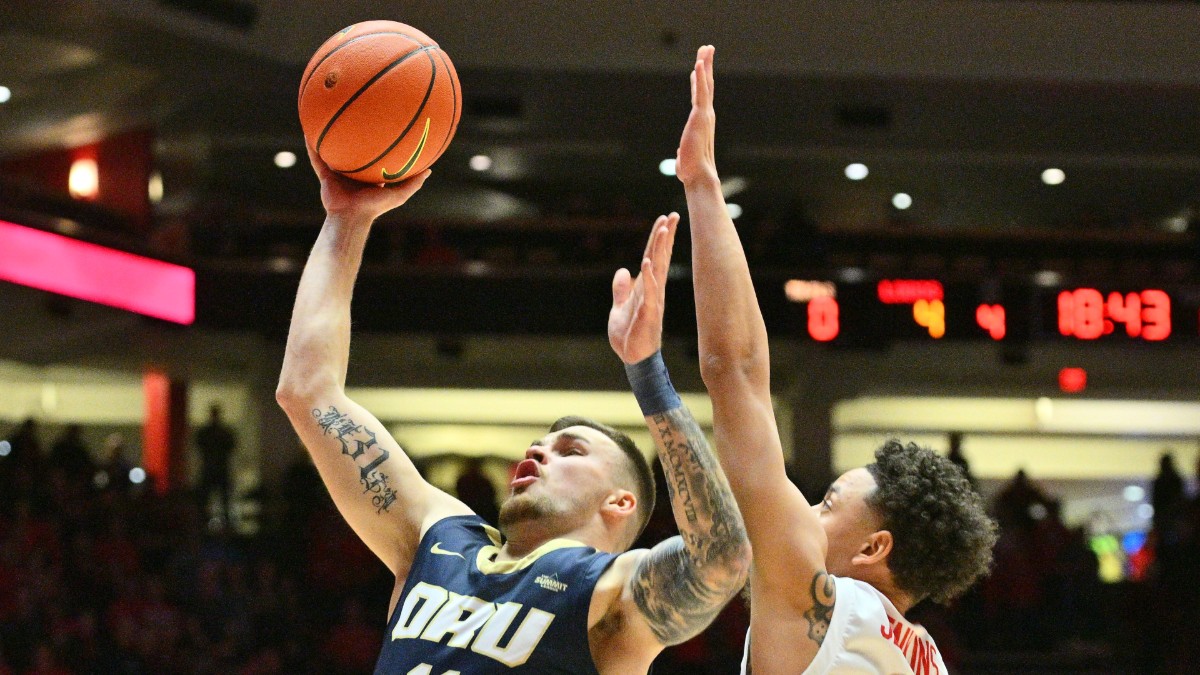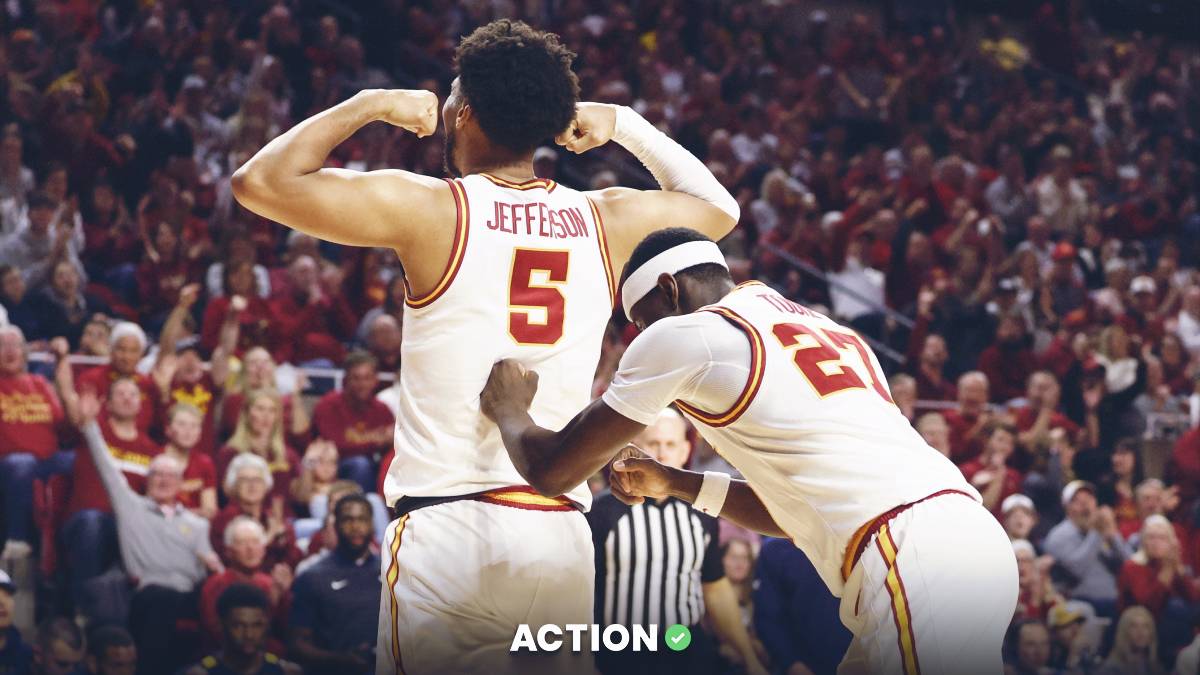This is a guest post from PoolGenius, whose expert bracket picks and tools have helped subscribers win over $1.8 million in prizes.
For a limited time, Action Network readers can get 10-55% off their 2023 tournament packages.
Bracket strategy is a topic most people don't understand. As soon as the NCAA tournament bracket is announced on Selection Sunday, millions of March Madness pool players will dive right into making their 2023 bracket picks — and almost all of them will do it the wrong way.
A lot of people think that winning a bracket pool is all about luck. Nothing could be further from the truth. In fact, using the right strategy to pick your 2023 NCAA bracket can double or even triple your odds to win your tournament pool. We've got the data to prove it.
The bad news, for most bracket pool players at least, is that it takes a lot of information and math to identify the best bracket strategy for a particular pool.
If you don't have the analytical chops to calculate round-by-round survival odds for every team or to run thousands of computer simulations of your 2023 bracket contest, you'll be at a big disadvantage to any opponent who has the tools to do so.
Principles Of Bracket Pool Strategy
The good news is that optimal bracket strategy boils down to a small number of core principles. So even if you're not a math whiz, following a few general guidelines can still give you a leg up on your friends, family and coworkers in your 2023 March Madness pool.
These principles include:
- Understanding your pool's scoring system
- Assessing both the risk and value of picks
- Adjusting strategy for the size of your pool
- Avoiding popular "Golden Rules" for bracket picking
In this article, we'll take a deep dive into the first strategy principle above: understanding how your pool's scoring system should influence the bracket picks you make.

Understand and Game the System
Forget about bracket pools for a minute and just think about college basketball in general. Even if you're clueless about NCAA bracket strategy, you probably know that in basketball a made field goal is worth two points. The one exception is a 3-pointer, which is worth 50% more.
What are the strategy implications of this scoring system? If the defense leaves you open and you willingly take a shot from two inches inside the 3-point line, that's not a smart decision.
Compared to just stepping just a few inches back, you're taking a similar risk of missing the shot, for a potential reward that's much lower.
Because of the rules, many successful basketball teams now employ a strategy focused on shooting either 3-pointers or close inside shots — no more mid-range jumpers. To maximize your edge in your 2023 bracket contest, you need to take an analogous approach.
Bracket Strategy For Traditional Scoring
The traditional bracket pool scoring system awards the following number of points for a correct pick in each successive round: 1-2-4-8-16-32. The primary implication of that scoring system is that the highest leverage picks all come in the later rounds.
Even though each round is worth the same number of total points (32), the distribution of possible outcomes becomes more binary and extreme in the later rounds.
For example, the First Round has 32 different games to pick. As a result, every player in your pool will almost certainly get several First Round picks wrong. When the dust settles, in traditional scoring, the difference between a good and not-so-good First Round might be a total of five or seven points.
Your champion pick, on the other hand, is a single pick that's either going to net you 32 points or zero points. The outcome of that one pick is far more likely to determine whether you win or lose your pool.
In traditional bracket contest scoring, how your bracket performs in the Final Four games and beyond has an outsized impact on your final score. Even if you have a killer First Round, that early lead of yours can easily end up being meaningless by the end.
You're highly unlikely to win a traditional scoring pool unless some of your late-round picks come through.
So, in the limited amount of time between Selection Sunday and the start of the First Round on Thursday, focus on optimizing your picks for the final few rounds, and don't get caught up in all the First Round upset pick hype.

Bracket Strategy For Non-Traditional Scoring
What if they changed the rules of college basketball, and layups from the left side of the key (but not the right) were suddenly worth six points instead of two points?
In that case, you would expect any smart coach to revamp their team's offensive and defensive strategies. They would implement new offensive schemes designed to get a shooter open on the left side of the court, and the resulting game would look much different to spectators.
A rule change like that sounds crazy when applied to the game of basketball. But in the game of bracket pools, scoring system differences of similar magnitude happen all the time from pool to pool. Yet many players don't adjust their picks to account for the strategy implications.
In effect, they still keep shooting a bunch of shots from the right side of the key, even if shots from the left side are worth three times as much.
In non-traditional scoring systems, you can get a huge edge over your bracket pool opponents if you ignore what a bracket for a traditional scoring system typically looks like. It's a psychological challenge as much as anything else.
Let's review a few specific examples of strategy for non-traditional rules.
Flatter Scoring Systems
One alternative round-based scoring system awards 1-2-3-4-5-6 points per correct pick, by round. That's a very different point structure than 1-2-4-8-16-32, so your bracket strategy needs to change accordingly.
In 1-2-3-4-5-6 scoring, the First Round is still worth a total of 32 points, which is the same as in the traditional system. But correctly picking a team to make the NCAA championship game — which is very difficult to do — is only worth five points.
That's barely more than getting a Sweet 16 pick right in traditional scoring.
Another scoring system popular in nerdier circles is the Fibonacci sequence (2-3-5-8-13-21), which is named after a badass 13th century Italian mathematician. Shout out to Daryl Morey, President of the Philadelphia 76ers and our longtime subscriber, who swears by this system!
Both in Fibonacci and especially in 1-2-3-4-5-6 scoring, early-round pick performance is more likely to be a difference-maker in determining the pool’s eventual winner. So, it generally pays to be more aggressive making contrarian value picks in the earlier rounds.
That's because the worst case outcome of making a First or Second Round upset pick in the traditional scoring system isn't that you get the pick wrong, and miss a point or two from that round.
The scenario that stings far more happens when you eliminate a good team from your bracket early, and that team ends up making a deep run in the 2023 tournament.
If that happens, your opponents could score a lot of points that you miss, and your incorrect early upset pick might end up costing you an in-the-money finish.
In the traditional scoring system where late-round games are worth 16 times or 32 times as much as First Round games, picking even just a few big early upsets can significantly decrease your odds to win your pool.
In flatter scoring systems, though, the negative impact of missing late-round picks decreases, and the worst case scenario of a bold early-round pick strategy gets — for lack of a more elegant phrase — a lot less worse.
Upset Bonus Pools
If your bracket pool offers bonus points for correctly picking seed-based upsets (or more generally, for picking lower-seeded teams to advance), optimal strategy changes yet again.
We’ve run millions of computer simulations of NCAA bracket contests, and we've studied the performance of many different pick strategies across tens of thousands of real-world pools.
The results clearly demonstrate one thing.
Most players in bracket contests with upset bonuses aren’t nearly as aggressive as they should be when it comes to making risky upset picks. It's the exact opposite situation as traditional scoring, in which many players pick too many upsets.
In upset bonus pools, optimal strategy tends to produce a bracket that looks rather insane to a casual bracket picker. When most people take a look at the brackets we recommend for upset bonus pools, their reaction often varies between shock and ridicule.
“Look at all these double-digit seeds in the Sweet 16!" they exclaim while coughing up their mashed potatoes. "That’s absurd! It's never happened, and there's no way it's going to happen this year!”
These people display a fundamental misunderstanding of bracket strategy. The goal is not to try to pick a perfect bracket that realistically looks like how the 2023 NCAA tournament may end up playing out. (The odds of doing that are infinitesimally low, anyhow.)
Rather, the goal is to identify and take the calculated risks that give you the best chance to outscore all of your opponents.
In upset pools especially, doing so often means designing a bracket that is expected to get lots of picks wrong. But that's perfectly fine, as long as it also yields a few very high-value picks that you get right.

Taking Calculated Risks In Bracket Pools
In upset bonus pools, you can earn a lot of points for correctly picking a big upset. However, your odds of correctly picking the specific big upsets that actually end up happening in 2023 are very low.
In this scenario, the best bracket strategy is often to take a shotgun approach to balance your overall risk and reward.
Consider a scoring system that awards upset bonus points based on seed difference, a popular option. In that system, correctly picking a No. 14 seed to beat a No. 3 seed in the First Round is worth 12 points. (One point for the First Round win plus 11 bonus points for seed difference.)
That point total is 50% more than what you would score for correctly picking a Final Four team in traditional scoring (8 points), assuming one of the favorites makes it! It's also 12 times the number of points you would score for correctly picking the favored No. 3 seed to win.
That's a huge reward, given that No. 3 seeds usually don't have anywhere near 12 times the odds to win First Round games as their No. 14 opponents do.
With heavy upset bonuses in play, having five, six, or even more double-digit seeds making the Sweet 16 can be a very smart strategy. Yes, it's almost certainly not going to happen in 2023. You would expect a lot of red in your bracket after the first two rounds.
But do the math. If you pick all four No. 14 seeds to win in the First Round, and only get one of them right, you'll score 12 points for going a measly 1-for-4. In contrast, picking all the No. 3 seeds to win and going 3-for-4 is worth only three points. That's a big difference.
As long as you don't think any of those No. 3 seeds have a great chance to make a deep run in the tournament, picking all four of them to lose straightaway can increase your chance to win an upset bonus pool.
The Best Bracket Strategy in 2023
Understanding the implications of your bracket pool's scoring system is critical for maximizing your edge, but it's still just one aspect of bracket strategy.
Other factors — including the size of your pool, its payout structure and how you expect your opponents to pick their brackets — also play a big role in crafting the best possible picks.
And you won't get far without identifying, aggregating and analyzing a lot of data, including accurate round-by-round team advancement odds and nationwide pick popularity estimates.
The vast majority of bracket pool players, even those who are serious about winning, simply don't have the analytical chops or the time (or both) to do it right. There are 9.2 quintillion different ways to fill out a 2023 NCAA bracket, and only one of them is best for your pool.
That's why we built the world's first bracket optimizer. You provide a few details about your 2023 NCAA bracket contest, and in seconds, it generates ready-to-play brackets that give you the best chance to win. The technology behind it is so sophisticated, WIRED even wrote about it.
Using PoolGenius, you don't need to know the first thing about college basketball or math to maximize your edge in March Madness pools. And most importantly, it works. Since 2015, on average, 52% of our subscribers have reported winning a bracket pool prize each year.
The product also includes round-by-round team survival odds, predictions and matchup stats for any possible 2023 NCAA tournament matchup, and in-depth research on all 68 teams. It even includes tools for competing in NCAA Survivor pools and Calcutta auctions.
It's your secret weapon for March Madness 2023, especially if you've got more pressing things to do than spend 10 hours on bracket research. Click below to get picks now:
NCAA Bracket Picks from PoolGenius
10-55% Off for Action Network Readers

















































